1. Early Life and Background
Robert Capa was born Endre Ernő Friedmann on October 22, 1913, in Budapest, Austria-Hungary, into a middle-class Ashkenazi Jewish family. His parents, Dezső Friedmann, a tailor, and Júlia (née Berkovits) Friedmann, who owned a successful fashion shop, raised him with his two brothers: an older brother, László Friedmann, and a younger brother, Cornell Capa, who would also become a renowned photographer. Capa's mother, Julianna Henrietta Berkovits, was a native of Nagykapos (now Veľké Kapušany, Slovakia), and his father, Dezső Friedmann, came from the Transylvanian village of Csucsa (now Ciucea, Romania).
Capa's early life in Budapest exposed him to political activism. He attended an evangelical school starting in 1919 and the Madách Imre Gymnasium in 1923. In 1931, at the age of 18, he became involved in left-wing student movements and participated in demonstrations against the authoritarian Miklós Horthy regime. For his radical political activities, Capa was arrested by the Hungarian secret police, beaten, and jailed. He secured his release through the intervention of a police official's wife who knew his family, on the condition that he immediately leave Hungary.
He subsequently moved to Berlin, where he enrolled at Berlin University to study journalism at the German Political College. To support himself, he worked part-time as a darkroom assistant for the German photographic agency Dephot. It was during this period that he took his first published photograph, capturing Leon Trotsky delivering a speech in Copenhagen in 1932 on "The Meaning of the Russian Revolution."
In 1933, as the Nazi Party rose to power and intensified antisemitism, imposing restrictions on Jews and banning them from colleges, Capa, being Jewish, decided to leave Germany. His mother and younger brother Cornell also fled to the United States around this time, though his father remained in Budapest. Capa briefly relocated to Vienna and then returned to Budapest before moving to Paris in 1934. In Paris, he struggled to find freelance photography work due as demand was limited and pay was low, sometimes relying on friends for accommodation. It was in Paris that he adopted the professional alias "Robert Capa."
2. Career
Capa's career was defined by his intrepid pursuit of conflict, documenting five major wars and numerous historical events, always striving to capture the raw human experience from the heart of the action.
2.1. Paris and Early Career
After arriving in Paris in 1934, Endre Friedmann struggled to find steady work as a freelance photographer. It was during this time that he met Gerda Pohorylle, a German-Jewish photographer who had also fled political persecution. They developed both a professional and romantic relationship. Together, they conceived the persona of "Robert Capa"-a renowned American photographer whose work they could sell at higher rates. Friedmann would present himself as "Robert Capa," with Pohorylle contributing significantly to their early photographic output. The name "Capa" itself was chosen because it sounded American and was derived from the Hungarian word `CápaHungarian` (pronounced "Tsah-pah"), meaning "shark," reflecting a bold and assertive image.
While initially a shared alias, Pohorylle eventually adopted her own professional name, Gerda Taro, and began publishing her work independently. Capa reportedly proposed marriage to Taro, but she declined, though their involvement continued. During this period, Capa also shared a darkroom with Henri Cartier-Bresson, a French photographer with whom he would later establish the Magnum Photos cooperative.
2.2. Spanish Civil War
From 1936 to 1939, Robert Capa extensively covered the Spanish Civil War, working alongside Gerda Taro and David Seymour. It was during this conflict that Capa captured his most iconic photograph, The Falling Soldier (1936), purportedly depicting the moment a Republican soldier was struck and killed. This photograph, published in French magazines and later prominently in Life and Picture Post, quickly propelled Capa to international fame, with Picture Post once describing him as "the greatest war photographer in the world."
However, the authenticity of The Falling Soldier has been a subject of enduring debate. Investigations, including comparisons with other photographs taken at the same scene, have led some to suggest that the image may have been staged or taken during a military exercise, rather than capturing an actual death in battle. Questions have also been raised about the true identity of the soldier and the exact location of the photograph, with some research indicating it was taken in Espejo, approximately 31 mile (50 km) from the Muriano front line, contrary to Capa's initial claims. Despite these controversies, Capa consistently maintained the photograph's authenticity throughout his life.
In July 1937, a tragic event occurred when Gerda Taro died near Brunete while returning from a photographic assignment covering the Battle of Brunete. She was involved in an accident where the motor vehicle she was traveling in collided with an out-of-control Republican tank. Capa, who was reportedly engaged to Taro, was deeply affected by her death and never married.
Capa's coverage of the Spanish Civil War also involved accompanying journalist and author Ernest Hemingway, whose experiences in the conflict later inspired his novel, For Whom the Bell Tolls. Life magazine published an article featuring Hemingway's time in Spain, accompanied by many of Capa's photographs.
A significant development in understanding this period of Capa's work came in December 2007, with the discovery in Mexico of three boxes filled with 4,500 35mm negatives. These negatives, by Capa, Taro, and Chim (David Seymour), collectively known as the "Mexican Suitcase," had been considered lost since 1939. This invaluable archive provided crucial insights into their collective documentation of the Spanish Civil War. In 2011, Trisha Ziff directed a film about this discovery, titled The Mexican Suitcase. Capa's reflections from this period reveal his deep empathy: "All you could do was to help individuals caught up in war, try to raise their spirits for a moment, perhaps flirt a little, make them laugh; ... and you could photograph them, to let them know that somebody cared."
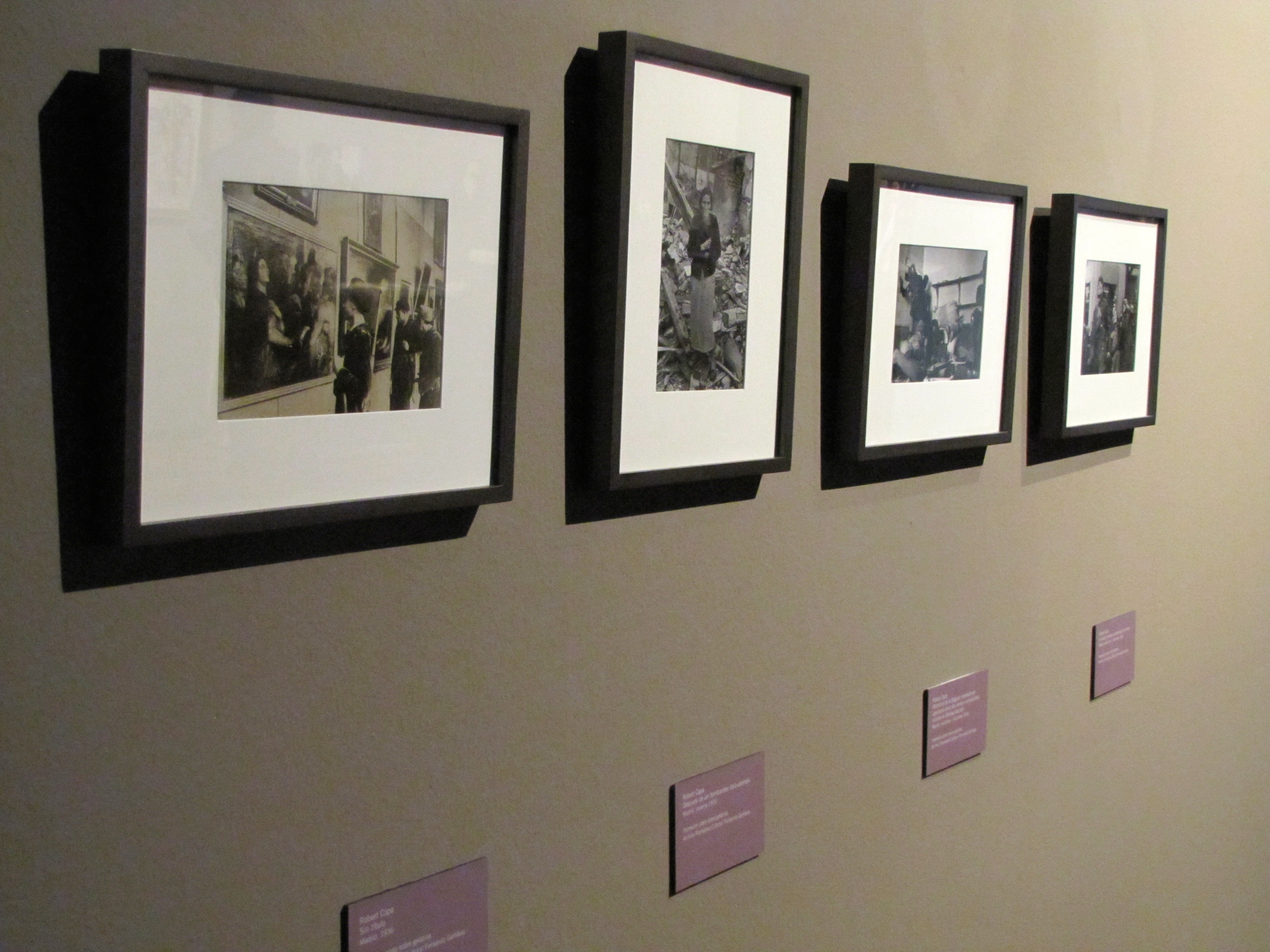
2.3. World War II
At the outbreak of World War II, Robert Capa was in New York City, having moved there from Paris to seek new assignments and escape Nazi persecution. As the war intensified, he was assigned to various parts of the European Theatre to document the conflict. He initially photographed for Collier's Weekly before switching to Life magazine, where he became the only "enemy alien" photographer working for the Allies. On October 7, 1943, Capa was in Naples, Italy, with Life reporter Will Lang Jr., where he captured images of the devastating 1943 Naples post office bombing. He also covered the North African Campaign and the Italian Campaign.
2.3.1. D-Day, Omaha Beach, 1944
Robert Capa's most renowned and debated assignment during World War II was his coverage of the D-Day landings on Omaha Beach on June 6, 1944. He was attached to the 16th Infantry Regiment, 1st Infantry Division, facing some of the fiercest German resistance from the Atlantic Wall.
Capa famously claimed to have taken 106 photographs during the landing, but that all but 11 were accidentally destroyed due to a darkroom error by a young assistant, Dennis Banks, who allegedly overheated the film during drying, causing the emulsion to melt. These surviving images became known as "The Magnificent Eleven." However, this narrative has been challenged by photographic historians like A. D. Coleman and even by John G. Morris, then picture editor at Life's London bureau, who suggested it was more likely Capa took only 11 images in total on D-Day. Further investigations have cast doubt on Capa's original account, indicating his landing craft arrived later than he claimed (around 8:15 AM, not 6:30 AM) and that he spent only 15 to 30 minutes on the beach. It was also noted that the section of Omaha Beach where he landed was not experiencing the most intense fighting at that specific time, and the film developing equipment typically did not generate enough heat to melt film as described.
The 11 prints were published in Life magazine's issue on June 19, 1944, under the caption "Capa's hand was trembling (Slightly out of Focus)," a phrase that also became the title of his memoir. The captions, written by magazine staffers as Capa provided no notes, were later found to be erroneous, as were some of Capa's subsequent descriptions. For example, men identified by Life as infantrymen taking cover behind a hedgehog obstacle during the assault landing were in fact members of Gap Assault Team 10 - a combined US Navy/US Army demolition unit tasked with blowing up obstacles and clearing the way for landing craft after the beach had been secured.
2.3.2. Chinese resistance to Imperial Japan, 1938
In 1938, Capa traveled to the Chinese city of Hankou, now within Wuhan, to document the resistance to the Japanese invasion. He sent his images to Life magazine, which published some of them in its May 23, 1938, issue.
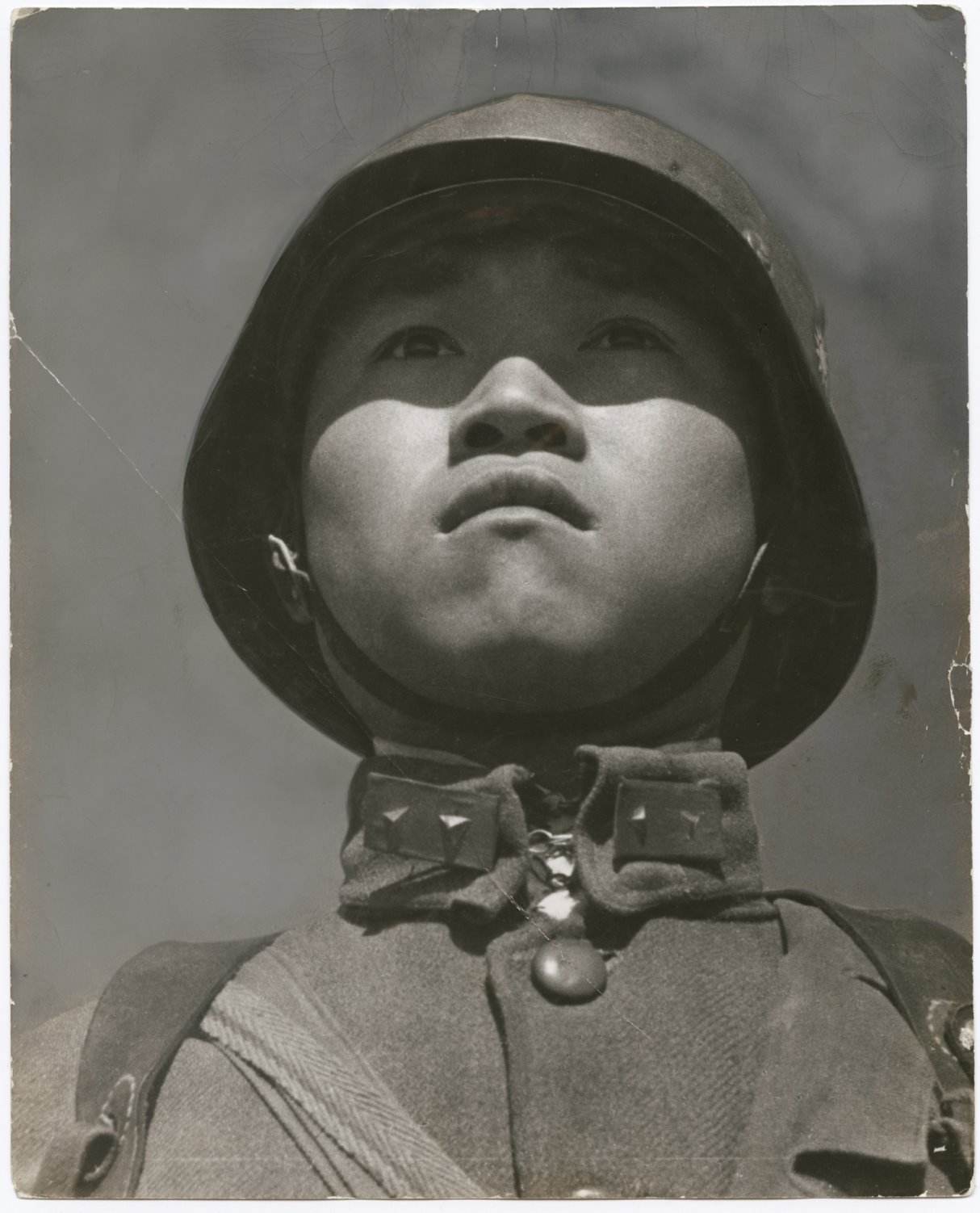
2.3.3. The Shaved Woman of Chartres
Capa took photographs during the Allied invasion of France in 1944. His picture The Shaved Woman of Chartres, taken on August 16, 1944, shows a woman whose head has been shaved as a punishment for collaboration with the Nazis.
2.3.4. The Picture of the Last Man to Die
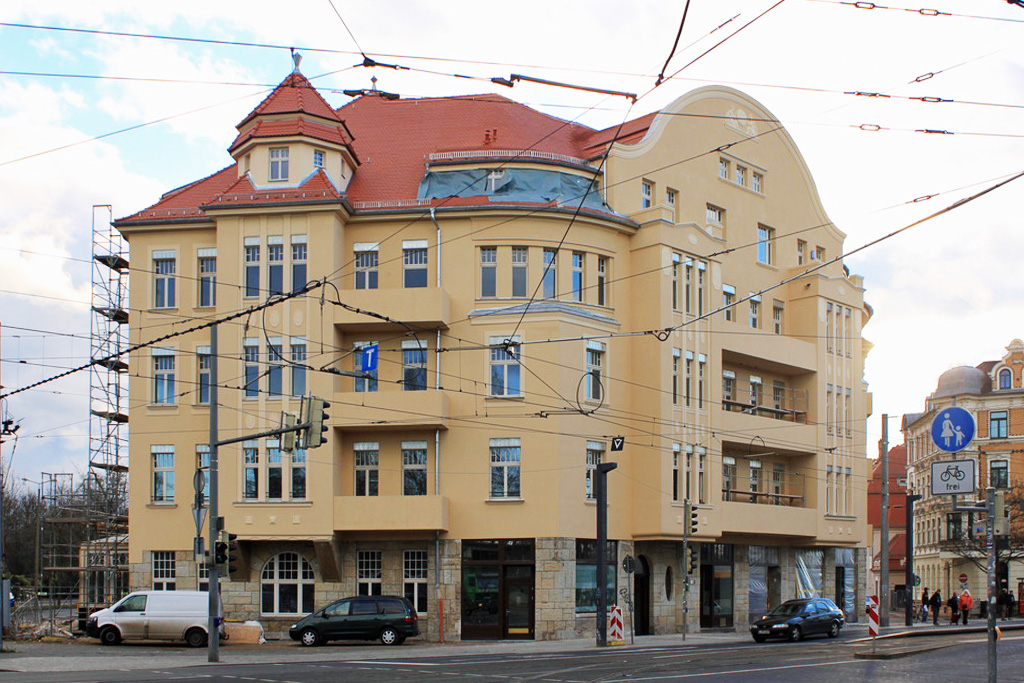
On April 18, 1945, as World War II neared its end, Capa was in Leipzig, Germany, documenting a fierce fight to secure a bridge. Among his photographs from this engagement was a poignant image capturing the death of Raymond J. Bowman, an American soldier killed by sniper fire. This photograph was published in Life magazine under the dramatic caption "The picture of the last man to die," becoming a widely recognized symbol of the war's final human cost.
2.4. Post-War Assignments
In 1946, after the European theater of World War II concluded, Capa made an attempt to work in Hollywood at the suggestion of his then-lover, actress Ingrid Bergman, but he soon abandoned the endeavor. He later produced a documentary film in Turkey focusing on the tensions of the Cold War. It was during this period that he officially obtained his American citizenship.
2.4.1. Post-war Soviet Union, 1947
In 1947, Robert Capa embarked on a journey to the Soviet Union with his friend, the American writer John Steinbeck. They had first met in an Algiers hotel in 1943 while serving as war correspondents before the Allied invasion of Italy. Upon reconnecting in New York, Steinbeck expressed his interest in visiting the Soviet Union, and Capa proposed they collaborate on a book, with Capa documenting the war-torn nation through his photographs. This partnership resulted in Steinbeck's book, A Russian Journal, which was published both as a standalone book and a syndicated newspaper serial. Capa's photographs from this trip captured scenes in Moscow and Kyiv, and among the ruins of Stalingrad.
His photographs from this trip also captured scenes in Tbilisi, Batumi, and of Georgian farmworkers.
Capa and Steinbeck maintained a close friendship until Capa's death, which deeply affected Steinbeck.
2.4.2. Founding of Israel, 1948
In 1948, Robert Capa extensively documented the tumultuous period of the founding of Israel and the subsequent 1948 Arab-Israeli War, which saw the newly established state attacked by neighboring countries. His numerous photographs from this critical historical moment accompanied Irwin Shaw's book, Report on Israel.
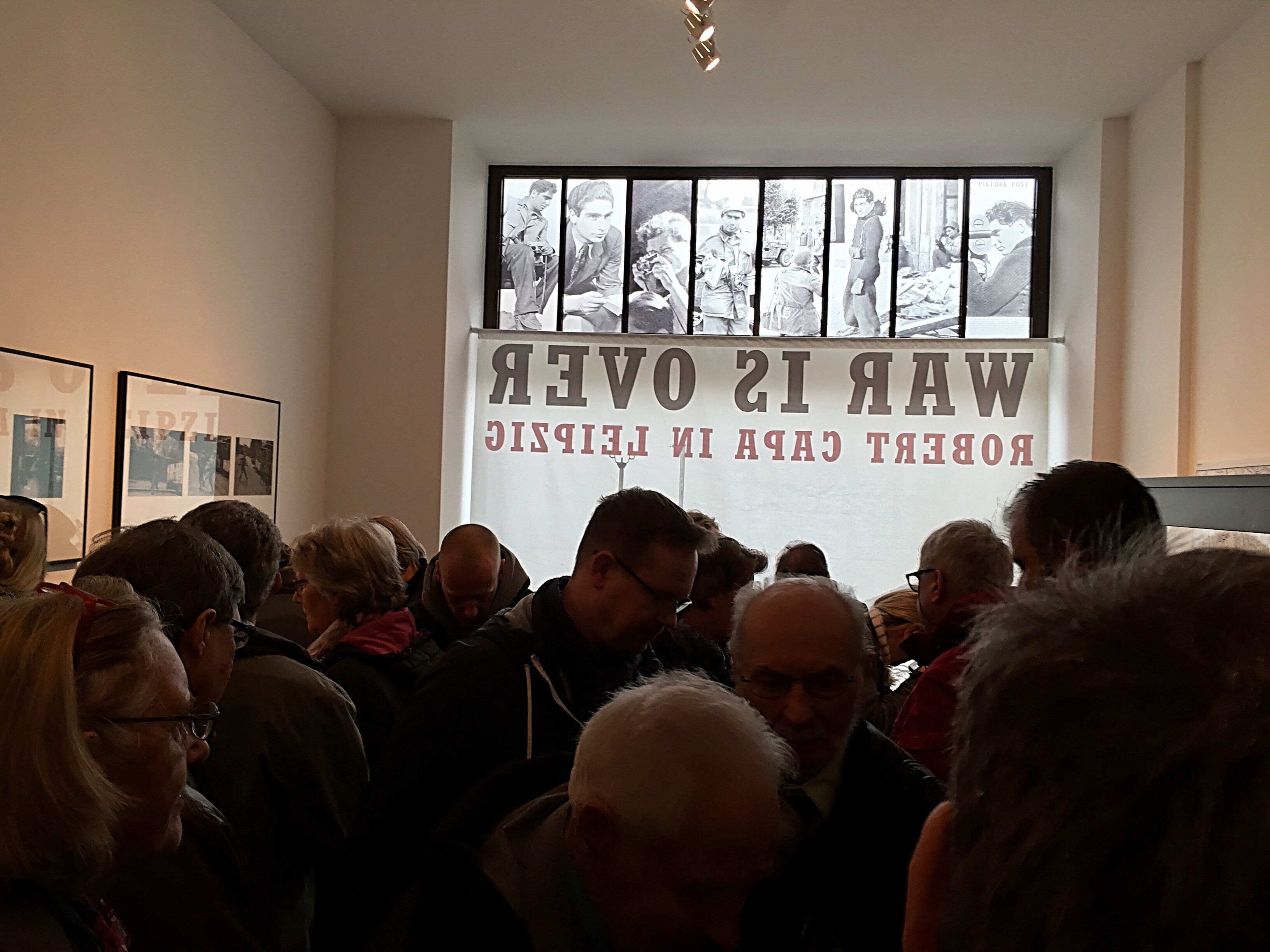
2.4.3. Documenting film productions, 1953
In 1953, Robert Capa undertook a unique assignment documenting a film production in Italy. He joined screenwriter Truman Capote and director John Huston on the set of the film Beat the Devil. Beyond his photographic duties, Capa, Huston, and the film's star, Humphrey Bogart, often enjoyed playing poker together during their off-camera hours.
2.5. The First Indochina War and Death
In the early 1950s, while in Japan for a Magnum Photos exhibition, Robert Capa received an assignment from Life magazine to cover the First Indochina War in Southeast Asia, where French forces had been engaged in conflict for eight years. Despite having previously expressed a desire to stop covering wars, Capa accepted the assignment.
On May 25, 1954, Capa accompanied a French regiment in Thái Bình Province, Vietnam, along with two Time-Life journalists, John Mecklin and Jim Lucas. At approximately 2:55 PM, while the regiment was moving through a dangerous area under fire, Capa decided to leave his jeep to go further up the road and photograph the advancing troops. Tragically, he stepped on a landmine near the road and was killed instantly. He was 40 years old at the time of his death, and reportedly died with his camera still clutched in his hand. A French-Vietnamese officer who confirmed his death simply stated, "The photographer is dead."
Capa's body was later repatriated to the United States and buried in plot #189 at Amawalk Hill Cemetery (also known as Friends Cemetery) in Amawalk, Westchester County, New York, alongside his mother, Julia, and his younger brother, Cornell Capa.
2.6. Magnum Photos
In 1947, Robert Capa co-founded Magnum Photos in Paris alongside prominent photographers Henri Cartier-Bresson, William Vandivert, David Seymour (known as Chim), and George Rodger. This groundbreaking initiative established the first cooperative agency for freelance photographers globally.
The formation of Magnum Photos was a pivotal moment for photojournalism, born from a desire among its founders to gain greater control over their work, copyright, and distribution, rather than relying solely on traditional agencies and magazines. It provided a framework that allowed photographers to retain ownership of their negatives and make independent decisions about their assignments. The cooperative quickly garnered a reputation for the high quality and impactful work produced by its members, fostering a new era of independent and ethical photojournalism. Robert Capa served as the president of Magnum Photos, taking on this leadership role in either 1951 or 1952, guiding the agency in its early, formative years and embodying its commitment to journalistic independence and integrity.
2.7. Connections to Japan
Robert Capa had notable connections with Japan, particularly in the later part of his career. In 1935, while in Cannes, France, he befriended Hiroshi Kawazoe and Seiichi Inoue, even staying at their apartment at one point and borrowing money from them to purchase a Leica camera. He maintained close ties with a circle of Japanese residents in Paris, including Chieko Hara, Kumao Maruyama, Minoru Kida, Junzo Sakakura, and the then-Paris bureau chief of the Mainichi Shimbun, Motoichi Kido, from whom he received a monthly part-time salary of 20 USD. The pseudonym "Gerda Taro" used by his partner, Gerda Pohorylle, is said to have been inspired by Taro Okamoto, a Japanese artist living in Paris at the time.
In April 1954, Capa visited Japan at the invitation of the Mainichi Shimbun to commemorate the launch of their photography magazine, Camera Mainichi. During his visit, he photographed various aspects of Japanese daily life in Tokyo, Atami, Yaizu, Kyoto, Nara, and Osaka. His photographs captured scenes such as Emperor Hirohito at the Imperial Palace, a May Day parade, Osaka Castle, Shitennoji Temple, the path to Kiyomizu-dera, the Great Buddha at Todai-ji Temple, and the headquarters of the Tenrikyo church. Shortly after this visit, he departed for North Vietnam for his final assignment covering the First Indochina War.
3. Personal Life
Robert Capa's personal life was deeply intertwined with his nomadic and dangerous career. Born into a middle-class Jewish family in Budapest, his parents, Dezső and Júlia (née Berkovits) Friedmann, were tailors, with his mother managing a successful fashion shop. He had two brothers: an older brother, László Friedmann, who died in 1934 and was buried in the Kozma Utca Jewish Cemetery, and a younger brother, Cornell Capa, who also became a renowned photographer and dedicated his life to preserving Robert's legacy. Cornell moved to Paris in 1936 to join Robert, where he developed his own passion for photography, deviating from his initial path in medicine.
In Paris, in 1934, Capa met and became professionally and romantically involved with Gerda Pohorylle, a German-Jewish refugee who shared his anti-fascist sentiments. Together, they invented the persona of "Robert Capa," initially using it as a joint pseudonym for their work. While Capa taught Gerda photography, she eventually adopted her own professional name, Gerda Taro, and achieved success independently. Capa was reportedly engaged to Taro, but she tragically died during the Spanish Civil War in July 1937. Her death profoundly affected Capa, and despite later relationships, he never married.
During World War II, in February 1943, Capa fell in love with Elaine Justin in England. She was then married to actor John Justin. Capa affectionately called the redheaded Elaine "Pinky" and documented their relationship in his wartime memoir, Slightly Out of Focus. Their relationship lasted until 1945, when Elaine broke up with Capa and later married Chuck Romine.
Some months after the war's end, Capa became involved with the famous Swedish actress Ingrid Bergman, who was touring Europe to entertain American soldiers. Their relationship developed, and in December 1945, Capa followed her to Hollywood. However, the demanding nature of his career and his experiences shaped his perspective on life and commitment. Although Bergman reportedly considered marrying him, Capa ultimately refused her proposal, and their relationship concluded in the summer of 1946 when Capa traveled to Turkey.
Capa's social nature led to close friendships with many notable figures, including Ernest Hemingway, John Steinbeck, director John Huston, and actor Humphrey Bogart. He was also known for his love of gambling, particularly poker.
4. Political Views and Activism
Robert Capa's political convictions were foundational to his life and career. As a young man in Budapest, he was drawn to the `MunkakörHungarian` (Employment Circle), a vibrant group of socialist and avant-garde artists, photographers, and intellectuals. He actively participated in demonstrations against the authoritarian Miklós Horthy regime. In 1931, before his first photo was even published, Capa was arrested, beaten, and jailed by the Hungarian secret police for his radical political activities. He was ultimately released on the condition that he immediately leave Hungary.
Throughout his life, Capa remained a staunch leftist and a committed democrat. The Boston Review described him as "passionately pro-Loyalist and passionately anti-fascist..." His work during the Spanish Civil War deeply reflected these views; he traveled with and photographed the Workers' Party of Marxist Unification (POUM), which included the context for his most famous photograph, The Falling Soldier. The British magazine Picture Post succinctly captured his ethos, describing him as "a passionate democrat, and he lives to take photographs," underscoring his unwavering commitment to documenting conflict from a perspective that often highlighted the human cost and the struggles of ordinary people against oppression.
5. Death
Robert Capa died on May 25, 1954, while covering the First Indochina War in Vietnam. He was on assignment for Life magazine, accompanying a French regiment through Thái Bình Province. At approximately 2:55 PM, during a military advance, he left his jeep to photograph the action more closely. While moving near a river bank about 0.6 mile (1 km) from the French position in Đoài Tán, he stepped on a landmine and was killed instantly. He was 40 years old. Reports indicate he was still clutching his camera at the moment of his death, a poignant testament to his dedication. His remains are interred at Amawalk Hill Cemetery in New York.
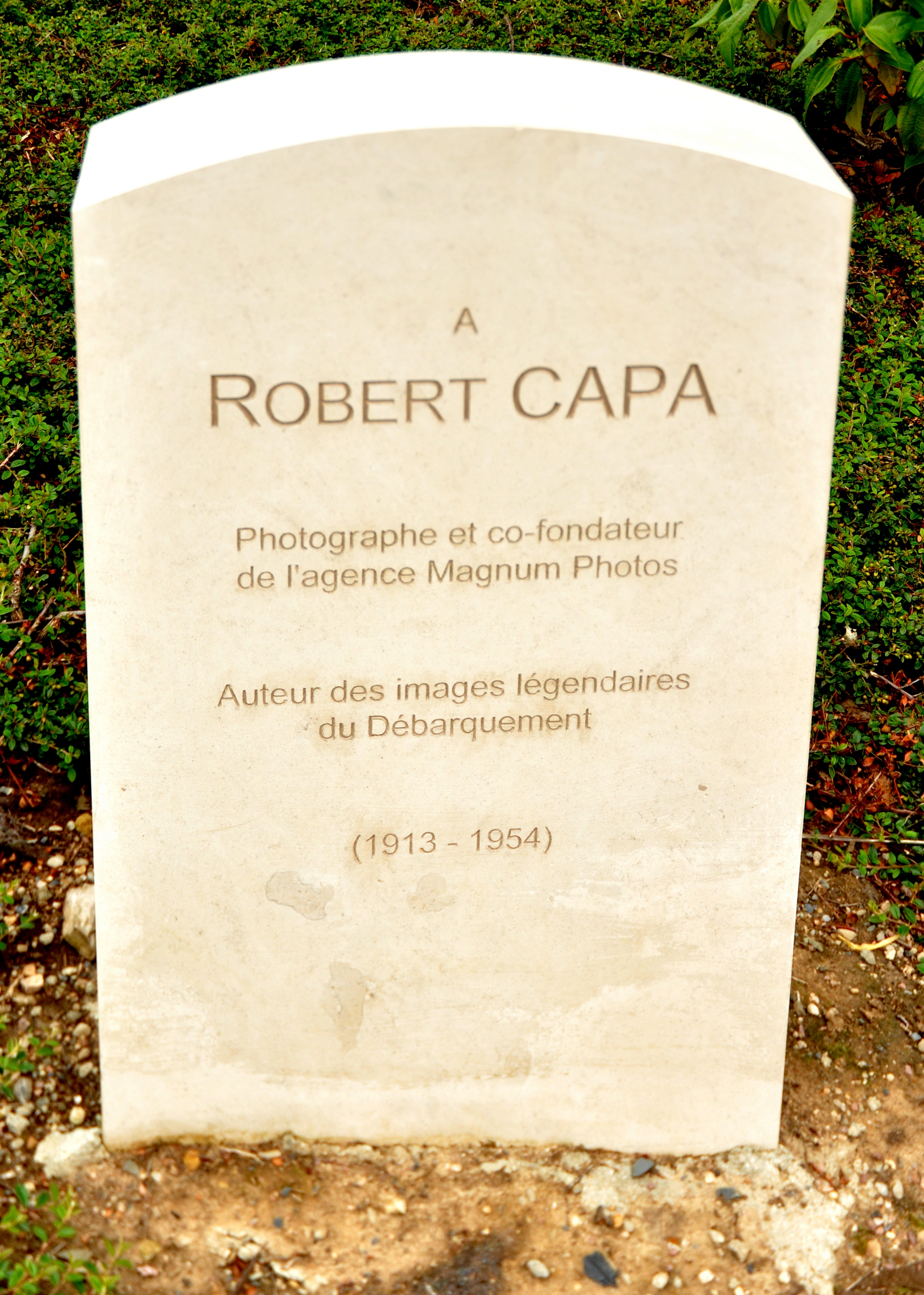
6. Legacy and Recognition
Robert Capa's legacy is profound, recognized through his transformative impact on photojournalism, numerous honors, and the dedicated efforts to preserve his extensive body of work for future generations.
6.1. Impact on Photojournalism
Robert Capa is widely credited with fundamentally redefining wartime photojournalism. His approach departed from the more detached perspectives of previous eras, advocating for an immersive, close-range engagement with his subjects. This philosophy is famously encapsulated in his enduring quote: "If your photographs aren't good enough, you're not close enough." This principle encouraged photographers to embed themselves directly in the heart of the action, risking their lives to capture the raw, unfiltered realities of combat and the profound human experience within it. Capa's work, often characterized by its gritty authenticity and focus on the individual soldier or civilian, reshaped combat photojournalism by prioritizing emotional impact and social relevance over mere documentation of military strategy. He believed that "The truth is the best picture, the best propaganda," and his commitment to this truth, even amidst the chaos of war, left an indelible mark on the field. He also famously quipped, "This war is like an actress who is getting old. It is less and less photogenic and more and more dangerous," reflecting his jaded but committed view of conflict. Another of his well-known sayings was, "It's not enough to have talent, you also have to be Hungarian."
6.2. Awards and Honors
Robert Capa received significant recognition for his courageous and impactful work. In 1947, for his photographic documentation of World War II, U.S. General Dwight D. Eisenhower personally awarded Capa the Medal of Freedom.
Posthumously, his home country of Hungary honored him in 2013 by issuing a postage stamp bearing his likeness and a `5.00 K HUF` gold coin, which was valued at approximately 20 USD at the time. The Overseas Press Club of America established the Robert Capa Gold Medal Award in his honor, recognizing "the best photographic reporting requiring exceptional courage and enterprise abroad." A notable recipient includes Kyōichi Sawada in 1970 for his coverage of the Cambodian Civil War. In 1976, Capa was posthumously inducted into the International Photography Hall of Fame and Museum. Furthermore, a street in Leipzig, Germany, is named after him, and a commemorative plaque exists in his native Budapest.
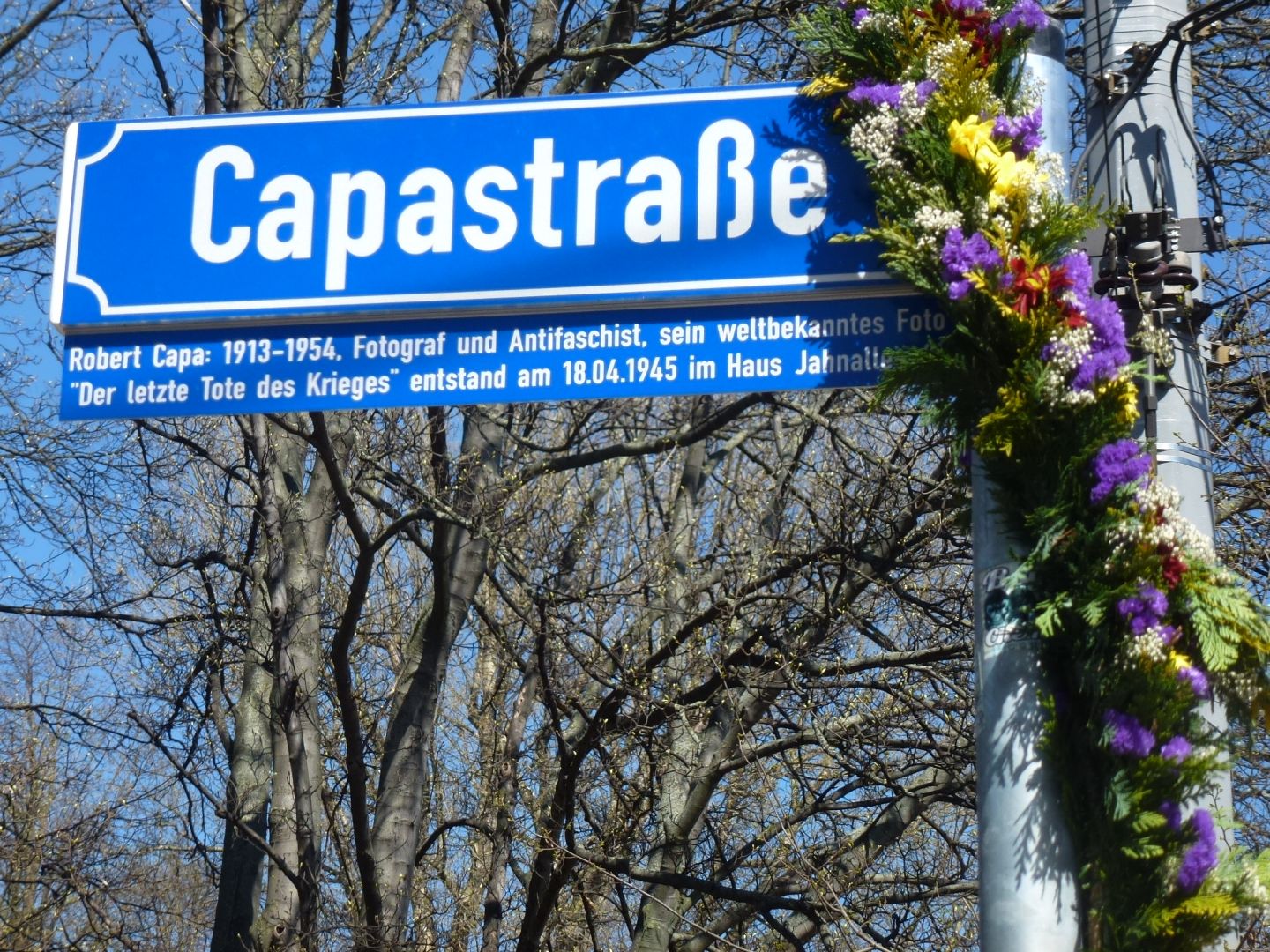
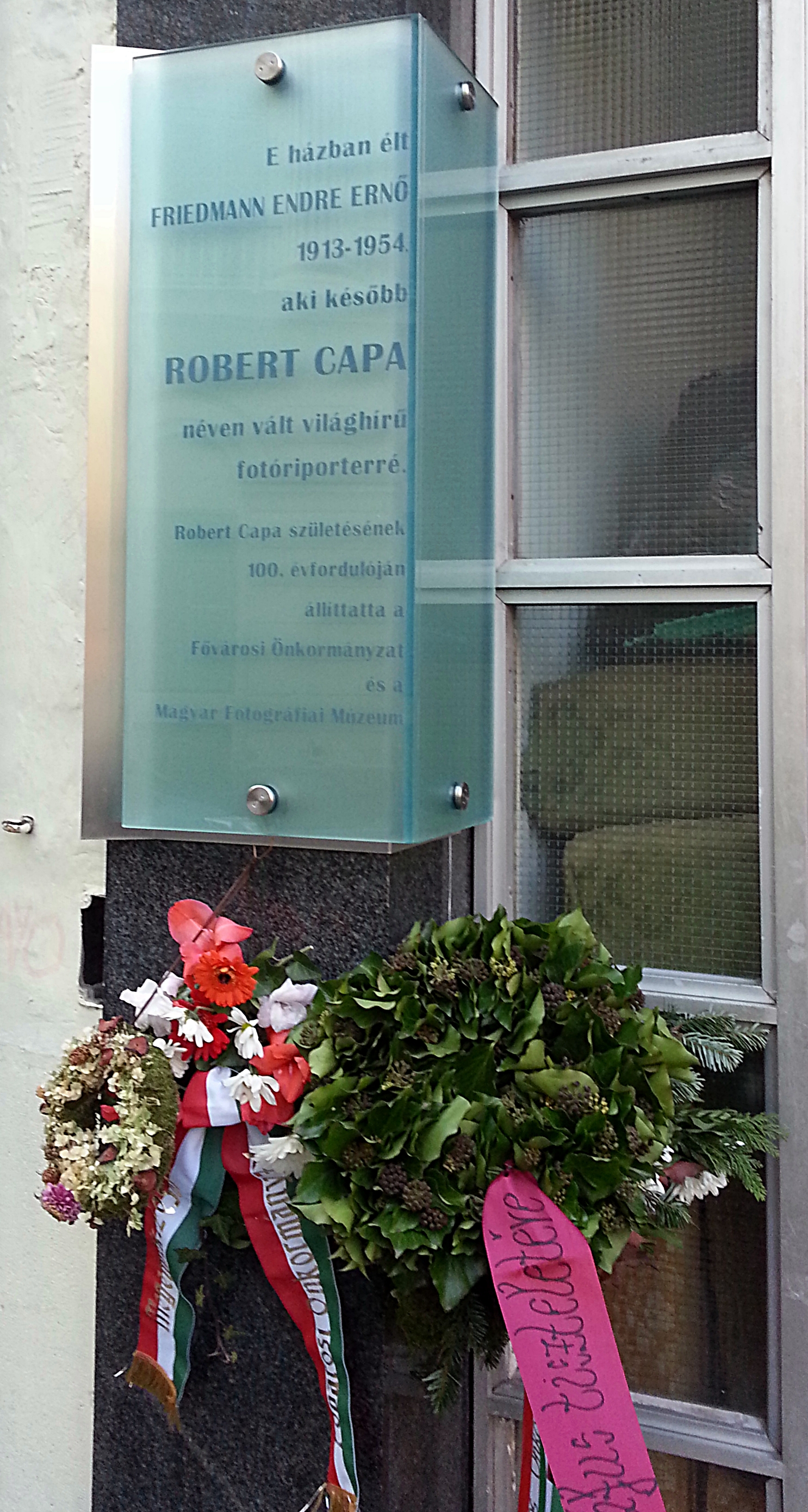
6.3. Preservation and Institutions
A cornerstone of Robert Capa's enduring legacy is the dedicated effort by his younger brother, Cornell Capa, to preserve and promote his vast body of work. Recognizing the critical importance of photography as a historical record, Cornell founded the International Fund for Concerned Photography in 1966. To provide a permanent home for this growing collection and to foster photographic education and preservation, he established the International Center of Photography (ICP) in New York City in 1974. The ICP has since become a leading institution for the study and exhibition of photography, representing one of the most comprehensive conservation efforts in the field.
The International Center of Photography has organized significant exhibitions showcasing Capa's contributions, such as the traveling exhibition This Is War: Robert Capa at Work. This exhibition featured a deep dive into Capa's innovative photojournalism from the 1930s and 1940s, including vintage prints, contact sheets, caption sheets, handwritten observations, personal letters, and original magazine layouts from his reportages on the Spanish Civil War, the Second Sino-Japanese War, and World War II. It was displayed at prestigious venues including the Barbican Art Gallery, the International Center of Photography of Milan, the Museu Nacional d'Art de Catalunya, and the Nederlands Fotomuseum between 2009 and 2010.
6.4. Cultural Influence
Robert Capa's influence extended beyond photojournalism into broader cultural discourse. He is notably credited with coining the term "Generation X" to describe the young people coming of age immediately after World War II. This term was used as the title for a photo-essay he published in 1953 in Picture Post (UK) and Holiday (US). Capa himself explained its genesis: "We named this unknown generation, The Generation X, and even in our first enthusiasm we realised that we had something far bigger than our talents and pockets could cope with."
7. Publications
7.1. Publications by Capa
- The Battle of Waterloo Road. New York: Random House, 1941. Photographs by Capa. With text by Diana Forbes-Robertson.
- Invasion!. New York, London: D. Appleton-Century, 1944. Photographs by Capa. With text by Charles Wertenbaker.
- Slightly Out of Focus. New York: Henry Holt and Company, 1947. New York: Modern Library, 2001. Text and photographs by Capa. With a foreword by Cornell Capa and an introduction by Richard Whelan. A memoir.
- Images of War. New York: Grossman, 1964. Text and photographs by Capa. With a text by John Steinbeck.
- Robert Capa: Photographs. New York: Aperture, 1996. New York: Aperture, 2004.
- Heart of Spain: Robert Capa's Photographs of the Spanish Civil War. New York: Aperture, 1999. New York: Aperture, 2005.
- Robert Capa: The Definitive Collection. London, New York: Phaidon, 2001. London, New York: Phaidon, 2004. Edited by Richard Whelan.
- Robert Capa at Work: This is War!. Göttingen: Steidl, 2009. Photographs by Capa. With a foreword by Willis E. Hartshorn, an introduction by Christopher Phillips, and text by Richard Whelan. Published to accompany an exhibition at the International Center of Photography, New York, September 2007 - January 2008. This detailed examination covered six of Capa's most important war reportages from the first half of his career: the Falling Soldier (1936), Chinese resistance to the Japanese invasion (1938), the end of the Spanish Civil War in Catalonia (1938-39), D-Day, the US paratroop invasion of Germany and the liberation of Leipzig (1945).
- Questa è la Guerra!: Robert Capa al Lavoro. Italy: Contrasto, 2009. Published to accompany an exhibition in Milan, March-June 2009.
7.2. Publications with others
- Death in the Making. New York: Covici Friede, 1938. Photographs by Capa and Taro.
- A Russian Journal. New York: Viking, 1948. Text by John Steinbeck, illustrated with photographs by Capa.
- Report on Israel. New York: Simon & Schuster, 1950. By Irwin Shaw and Capa.
7.3. Publications about Capa
- Robert Capa: a Biography. New York: Knopf, 1985. By Richard Whelan.
- Blood and Champagne: The Life and Times of Robert Capa. Macmillan, 2002; Thomas Dunne, 2003; Da Capo Press, 2004. By Alex Kershaw.
- La foto de Capa. Córdoba: Paso de Cebra Ediciones, 2011. A fictionalized account of the discovery of the exact location of the "Falling Soldier" photograph.
- Nizza oder die Liebe zur Kunst. Bad König: Vantage Point World, 2013. By Axel Dielmann. (Text in German)
- Capa : L'etoile filante. Graphic novel, 2016. By Florent Silloray. (Translated to Korean in 2017)
- Robert Capa: He Saw Too Much (Blood and Champagne: The Life and Times of Robert Capa). Translated by Yoon Mi-kyung. Seoul: Kang, 2006. (Korean translation)
- Then Capa's Hand Trembled (Slightly out of Focus). Translated by Woo Tae-jung. Seoul: Pilmaek, 2006. (Korean translation)
8. Works in Collections
Robert Capa's photographic works are held in the collections of numerous major museums and institutions worldwide:
- Art Institute of Chicago, Chicago, Illinois
- Metropolitan Museum of Art, New York
- Museum of Modern Art, New York
- Robert Capa Contemporary Photography Center, Budapest, Hungary
- Magnum Photos (represented in Robert Capa: The Definitive Collection)
- International Center of Photography, New York (represented in Robert Capa)
- Worcester Art Museum (represented in Robert Capa Photographs)
- The J. Paul Getty Museum
- International Photography Hall of Fame and Museum
9. In Popular Culture
References to Robert Capa and his work have appeared in various forms of popular culture:
- In 2013, the Japanese Female Musical Theater group Takarazuka Revue produced a musical piece based on the life of Capa, titled Robert Capa: Record of the Soul. Ms. Ouki Kaname performed the lead role. The group performed the musical in 2012 in Takarazuka and Tokyo, and again in 2014 in Nagoya.
- In Patrick Modiano's novella Afterimage, Capa serves as a mentor for the protagonist, Francis Jansen, a photographer who later retires to Mexico.
- The protagonist of Alfred Hitchcock's 1954 film Rear Window, L. B. "Jeff" Jefferies (portrayed by James Stewart), a photographer confined to his apartment, was partly based on Robert Capa.
- Poet Owen Sheers wrote a poem about Capa, titled Happy Accidents, which is included in his anthology Skirrid Hill.
- The 2012 album An Awesome Wave by the English indie rock group Alt-J features the song "Taro," which describes the love between Capa and Gerda Taro and the circumstances of his death.
- The Austrian rock singer Falco wrote the song "Kamikaze Cappa" in tribute to Capa, released in his 1986 album.
- The blurred and gritty depiction of the Omaha Beach scene in the 1998 film Saving Private Ryan was partly influenced by Robert Capa's D-Day photographs.